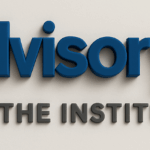Digital transformations fail. Not all of them; but a lot of them, maybe even most of them. They most often fail by overpromising and underdelivering what the people impacted by the transformation need and expect.
I once engaged in a back-and-forth conversation with a client who planned to use a CRM implementation to digitally transform their organization. The client repeatedly asked me if we could accomplish a laundry list of seemingly random requirements. After several frustrating minutes, I short-circuited the loop by saying, “If you give us enough time and money, we can do pretty much anything you want.”
“Anything you want.” That’s where the trouble with “transformations” starts. Through a combination of promising too much and not really knowing what is needed, organizations often approach transformation projects as a cure-all for issues they may not fully understand. They fail to take into account what a transformation needs to deliver for their users and other stakeholders. They also often view projects as point-in-time fixes for issues that are more systemic and require a longer, more persistent approach that evolves with the organization.
The initiatives often start with shiny new technologies. Technologies that promise payoffs like:
- Improved productivity or
- Slashed expenses or
- Pumped-up revenue or
- Thrilled customers.
Or, they begin with a fear that the organization is falling behind in adopting new technologies. This fear can create a concern that employees or customers will revolt if they fail to offer the latest and the greatest. As a result, many begin with a feeling of “we need to do something.”
Each of these scenarios is saddled with uncertainty. Uncertainty about what is needed and about what needs to be accomplished.
Removing the uncertainty involves engaging those impacted by the perceived “problems” in an ongoing dialogue. This sounds deceptively simple yet it is likely more daunting than the digital solutions themselves. It is a complex dance among multiple stakeholders who have competing interests driven by their own fears and uncertainty. Who can they trust? How will it impact their work? How will it impact their teams? Will they be blamed if (when) it goes sideways?
Implementing a CRM system, for instance, impacts at least the following groups: business developers, customer service agents, marketing, finance, operations, IT, C-suite executives, and possibly even customers.
Performing this dance requires diligence and persistence. While it is challenging to master, there are three primary steps that will help mitigate the fear and uncertainty in almost all transformations.
Who are “they”?
The first step is to understand who is impacted by the transformation and to designate them as stakeholders. In my experience, there are typically more stakeholders than you think. For example, during the CRM implementation mentioned above, we initially lumped all customers into a single bucket; but, we discovered that future customers have different perspectives from current customers.
Identifying them individually took additional effort and time; but doing so allowed us to be treat them differently (when necessary). The same was true for our internal users. New users may have different concerns from experienced users and may need to be treated differently.
I suggest identifying as many distinct groupings as possible to avoid missing key differentiators. After compiling the initial list, you can combine groups that make sense while keeping the initial list for future reference so you can revisit the distinct groups later in case something has shifted.
What do they need? What do you need from them?
The next step is to articulate what each group needs and what is needed from them. We often get into a rhythm where stakeholders are only receiving information or making demands. To be successful, there needs to be a balance between what each stakeholder is contributing and what they are receiving. Using the groupings identified in the step above, you can determine what is uniquely needed for and from each group.
In the CRM example, we identified two distinct user groups based on their community engagement. For those who rarely engaged with the community, we needed to keep them informed, but we did not need any particular input from them. For users who were more actively engaged in the community, we wanted them to relay information to the rest of the community on behalf of the project, and we asked some of them to participate in focus groups.
On each of your projects, articulating what is expected by and from each group allows you to better set expectations. This step helps ensure no one is surprised or disappointed about their level of involvement and contribution. It also provides valuable, real-time feedback to your team about how the initiative is being perceived, which is often a better measure of success than the actual technical implementation.
Clear, consistent, and concise communication
No one likes to be surprised. They especially dislike being surprised when they do not understand why something is happening. Changes, especially enterprise-wide changes, impact different stakeholders in different ways. And often, leaders prioritize certain changes to satisfy the needs of a “primary” stakeholder at the expense of other stakeholders.
In our CRM implementation, the primary driver was the consolidation of all customer and pipeline data into a single system to allow for better visibility and forecasting. Many of the initial requirements prioritized this need over the needs of day-to-day users. Users were initially hesitant to engage in an effort for which they did not see any inherent benefit.
To combat this, we created a two way dialog of clear, consistent, and concise communication. The objective was to create an open and collaborative environment that informed all stakeholders and empowered them to be part of the process. By including them in the process and keeping them informed, we avoided surprises that could derail our transformation.
Among other things, our stakeholder plan identified the audience, the purpose, the frequency, and the form of communication. People hear what they want to hear when they want to hear it; so we needed to create a steady drip of information going to each stakeholder. That said, the information had to be relevant and compelling so that it was not ignored.
This step is not easy. It requires dedicated and intentional effort to develop a stakeholder strategy that accounts for each stakeholder group. This is not a one-and-done task. You must start executing your plan before your initiative begins and continue it through implementation and beyond.
I would encourage you to take time to develop an intentional stakeholder plan for each of your initiatives, even seemingly minor ones. The plans do not need to be complex; but they need to be developed with the intent of engaging and informing all of the stakeholders involved.
Summary
Most transformation projects do not fail because of the technology. They fail because they do not provide the expected benefits that they promise to deliver. Typically, this is because those benefits are not well-understood or well-validated with all the stakeholders.
In our CRM example, the first step of the transformation was simply to consolidate all of the information into a single platform that allowed for better visibility and forecasting. As a result, the initial project did not deliver as many features and benefits for the end-users as they would have liked.
Through our communication strategy we were able to convey this intent to the users while also giving them confidence that their needs were heard and would be addressed in on-going initiatives. Setting expectations in this manner and delivering steady benefits created trust and goodwill between all of our stakeholders.
For us, the initial implementation created a foundation for future enhancements and integrations with other parts of the organization. Because we had established strong relationships between our stakeholders, we had their buy-in and support for an on-going transformation that delivered benefits gradually over multiple iterations.
I encourage you to follow these steps to build a strong foundation of engagement and trust with your stakeholders. Doing so will reduce surprises and help ensure your project meets its goals, transforming your organization into a stronger, future-ready enterprise.
Author:
 Jason Balser is a distinguished IT executive with a passion for uniting people to tackle technology and organizational challenges. With a career spanning financial institutions, non-profits, and technology firms, Jason has transformed businesses with business intelligence platforms, customer engagement strategies, CRM systems, updated banking systems, and modernization initiatives. He champions the power of collaboration and ensures that all voices impacted by technology are heard and valued. Beyond his professional achievements, Jason is an advocate for continuous learning and active community engagement.
Jason Balser is a distinguished IT executive with a passion for uniting people to tackle technology and organizational challenges. With a career spanning financial institutions, non-profits, and technology firms, Jason has transformed businesses with business intelligence platforms, customer engagement strategies, CRM systems, updated banking systems, and modernization initiatives. He champions the power of collaboration and ensures that all voices impacted by technology are heard and valued. Beyond his professional achievements, Jason is an advocate for continuous learning and active community engagement.
Tag/s:Business TransformationEmployee ExperienceFuture of WorkOrganizational Change







